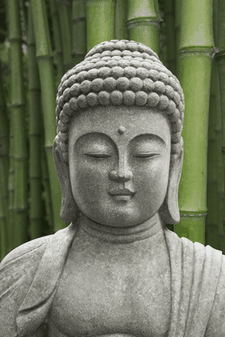Gautama Buddha (also known as Siddhartha Gautama Buddha) was a spiritual leader from the country of India whose teachings later helped for the religion of Buddhism. The specific word Buddha is used to describe the first period of awakening for the followers of Buddhism as well. Gautama Buddha is referred to in the Buddhist religion as the supreme Buddha, which is describing him as the most enlightened one of our age. To the best of our modern knowledge, Siddhartha Buddha was born around 563 BCE and died in or around 438 BCE. His birthplace is unknown due to few written records about this era and geographic location.
 Siddhartha Gautama Buddha is the primary figure in Buddhism, and the stories and fables about his life were collected after his death, memorized by his followers, and repeated so as to continue to have a strong hold on the enlightened one of the age. These tales are passed down orally, and didn’t actually get written down until at least 400 years later. This is particularly important because there are many generations of Buddhists in that 400 year gap that would have a chance to change, alter, or “reinterpret” these stories so as to make Siddhartha Buddha look like a more ideal Buddha.
Siddhartha Gautama Buddha is the primary figure in Buddhism, and the stories and fables about his life were collected after his death, memorized by his followers, and repeated so as to continue to have a strong hold on the enlightened one of the age. These tales are passed down orally, and didn’t actually get written down until at least 400 years later. This is particularly important because there are many generations of Buddhists in that 400 year gap that would have a chance to change, alter, or “reinterpret” these stories so as to make Siddhartha Buddha look like a more ideal Buddha.
Either way, Siddhartha was born into a royal family India, and was raised by his mother’s sister since most accounts tell that his mother died shortly after the infant’s birth. He had three different palaces built for him, and according to the ancient teachings, his father (the king at the time) shielded him from the suffering of the commoners and the religious teachings that were common at the time to make him a “better” king when the time came. He was also married young and had at least one child before deciding material wealth was of little interest to him.
At the age of 29, he left the palace grounds to meet his subjects, and was appalled at all the suffering and sickness that they suffered from. This made him rather sad; however he wanted to give these people hope because they were downtrodden. He even began a life of begging for alms for the poor to experience how his subjects lived. He began to study meditation as a way to withdraw from the physical material world around him. This included denying himself food and the practice of self-mortification.
He began to understand more about being enlightened, and he traveled all around teaching others about enlightenment. The particular way he meditated is now known as the Middle Way, which is a path of moderation that does not have extreme self-indulgence and has very little if any mortification. This came after he very nearly died due to his lack of eating. After that he was determined to show the people his Middle Way form of meditation.
According to the stories, even during his time on earth he was controversial. There was one particular monk that tried to kill him more than once. Others hired archers to shoot him in his sleep, or assassins to kill him before he was able to spread his form of meditation to the suffering people. After unsuccessful attempts to kill him, the archers and the assassins both became some of his followers.
He continued to spend the rest of his 45 years on earth traveling around and telling people of his discoveries. He held an audience for everyone, commoners and the royalty alike. Unlike many new religions at the time, race and class meant nothing to Buddhism. At his death, he told his followers to follow no leader because all they needed to know to reach enlightenment was within them. Buddhism technically does not have leaders; however they do have spiritual advisers that help those who ask for it.
If you are interested in spirituality, check out Psychic Spiritual Advisor Rene, who is a wonder clairvoyant. Also, Past Life Chat is a great place to chat about Buddhism and reincarnation.
